SESTransient, the successor of
AutoTransient, automates the analysis of transient phenomena with the FFTSES and HIFREQ engineering modules.
Similar to its predecessor, SESTransient runs FFTSES and HIFREQ in turn, using computation frequencies recommended by FFTSES to run HIFREQ, until user-defined termination criteria are met. However, with this integrated and streamlined version of
AutoTransient, SESTransient is more integrated, advanced and powerful.
Technical Highlights
SESTransient includes every capability of AutoTransient, and much more:
-
FFTSES and HIFREQ template files are designed within one streamlined interface.
-
Flexibility to import existing template HIFREQ & FFTSES files, or to design a network system with
SESCAD.
-
Interactive conductors selection through the Network 3D Viewer:
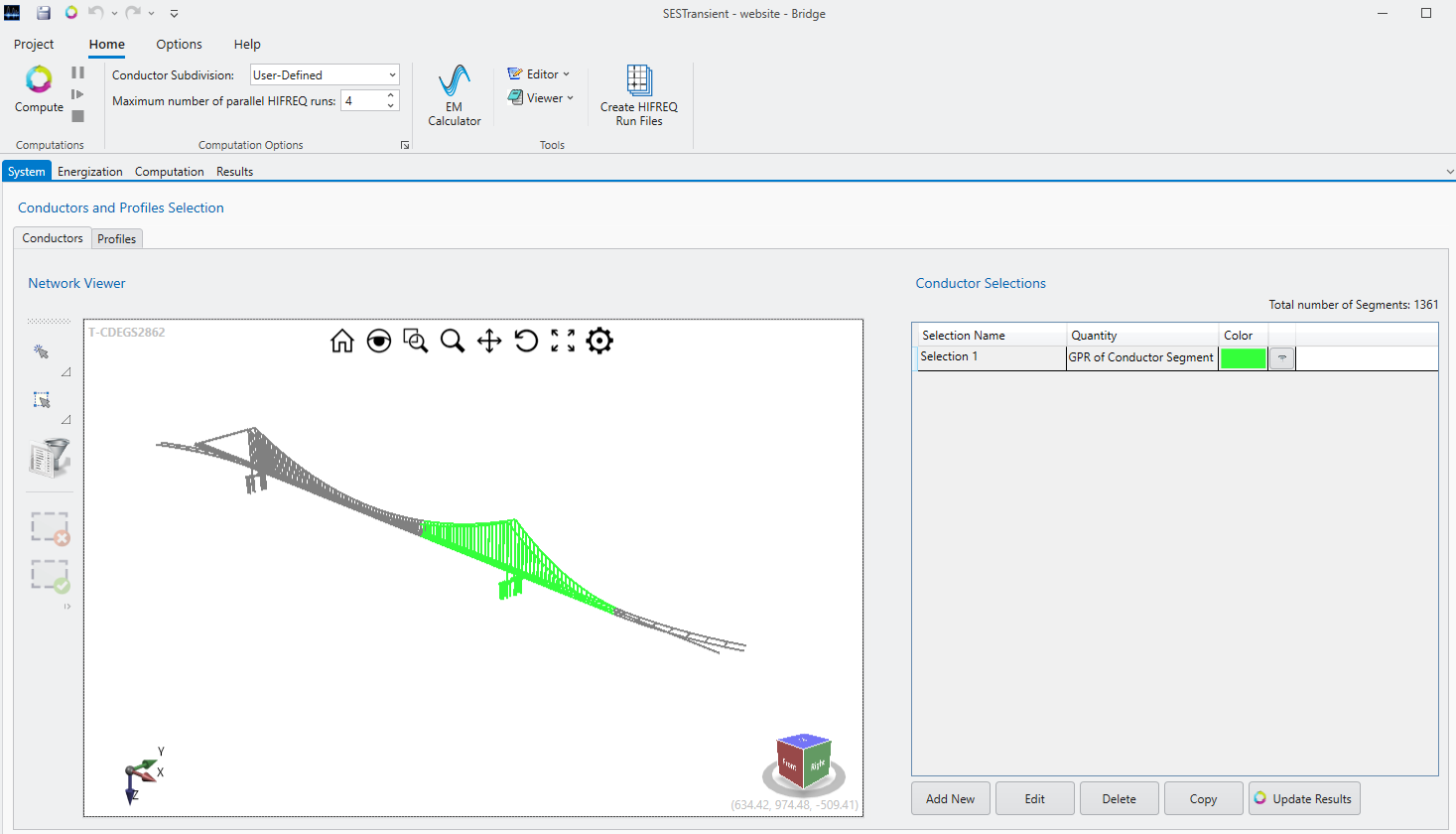
-
Further refinement of conductor selection(s) can be done by filtering according to criteria such as:
Depth, Radius, Coating Type, Conductor Type, Length, Segment Number, Conductor Number
or
Cable Type.
-
Users with multiple-core processors can run multiple HIFREQ computations in parallel, making the iterative process of running the HIFREQ module much more efficient and less time‑consuming:
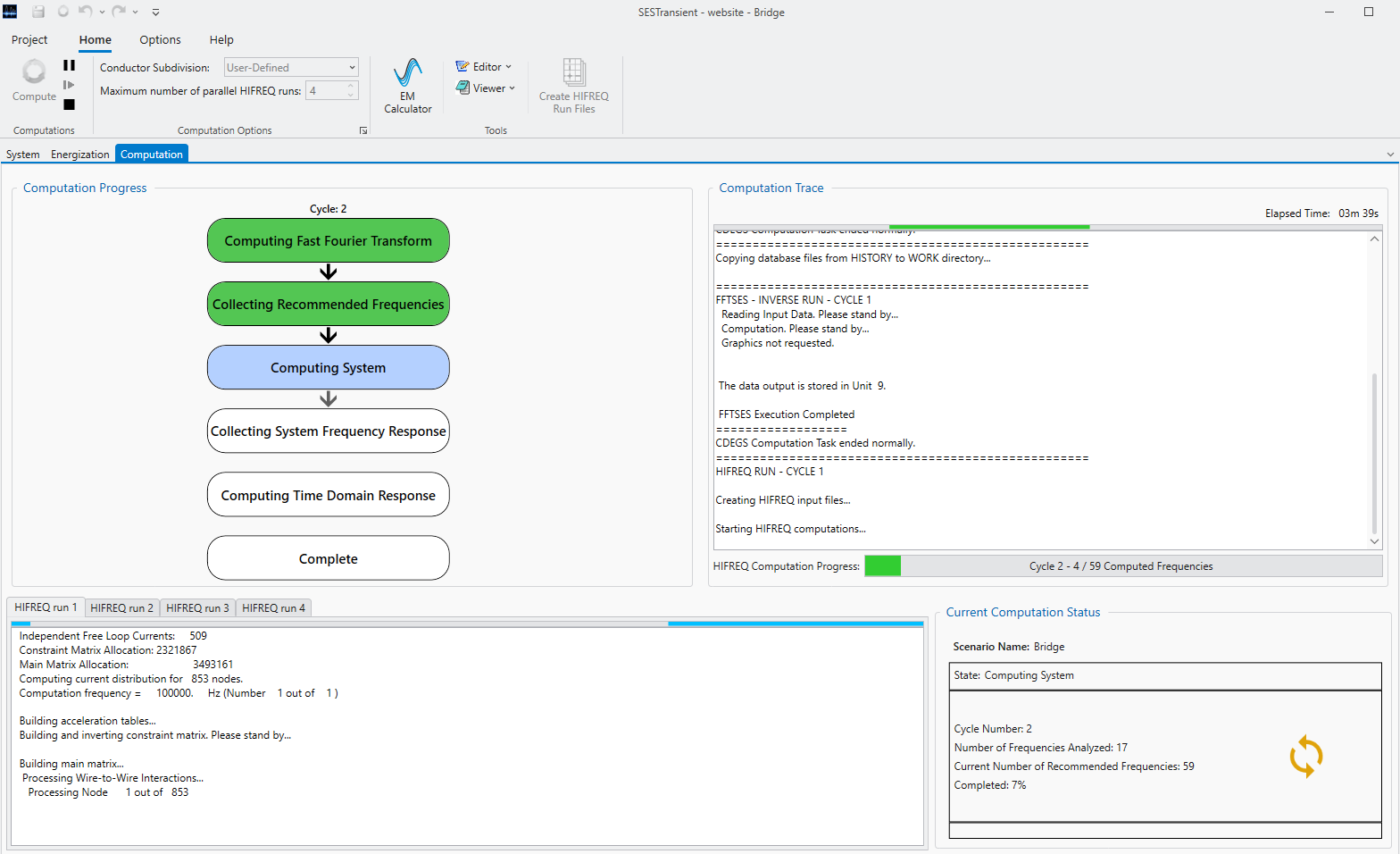
-
Integration of frequency dependent soil models. The electrical characteristics of soil varies with frequency, and SESTransient enables the specification of soil models that are frequency dependent. There are two options:
-
Soil resistivity and relative permittivity are calculated based on a model proposed by CIGRE – Visacro et al [1].
-
Multiple soil models can be defined at user-defined frequencies, which are used to interpolate or extrapolate the characteristics of the soils for the computed frequencies.
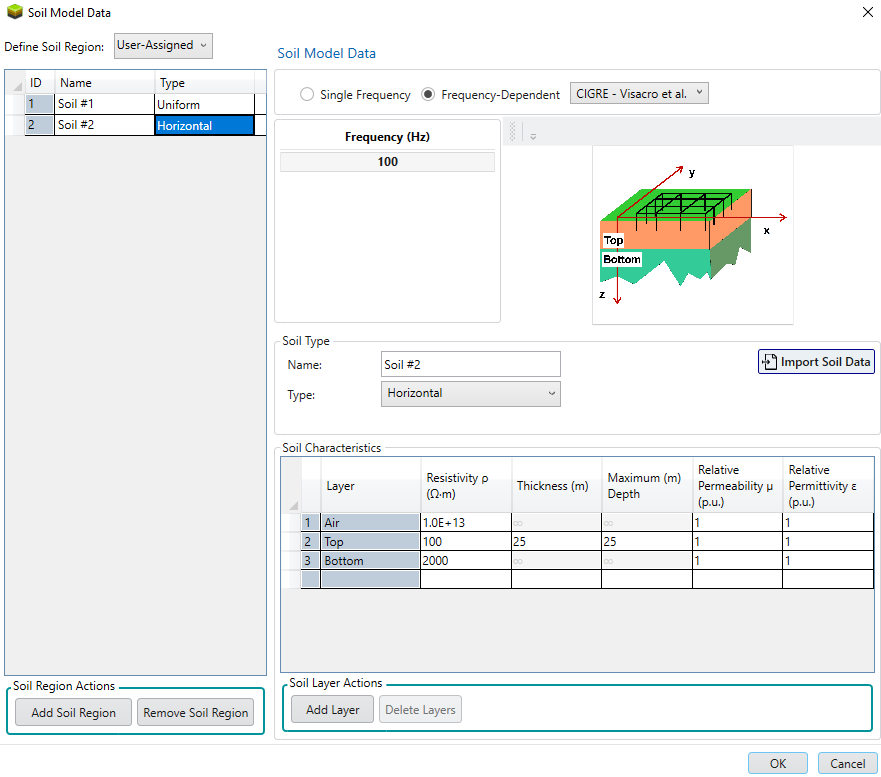
-
Integrated automatic computation and report of the transient dissipated body Energy and RMS Current for the safety analysis and evaluation.
-
A 3D Viewer enables visualization of the system in 2D or 3D, and facilitates analysis of computations. Several types of results can be displayed graphically in the 3D Viewer, including:
-
2D/3D spot plots for profiles and surfaces
-
3D plots for segment-related quantities
-
2D/3D spot plots of Energy and RMS values for specific quantities
Results can also be exported in a CSV file format for further examination of computed values.
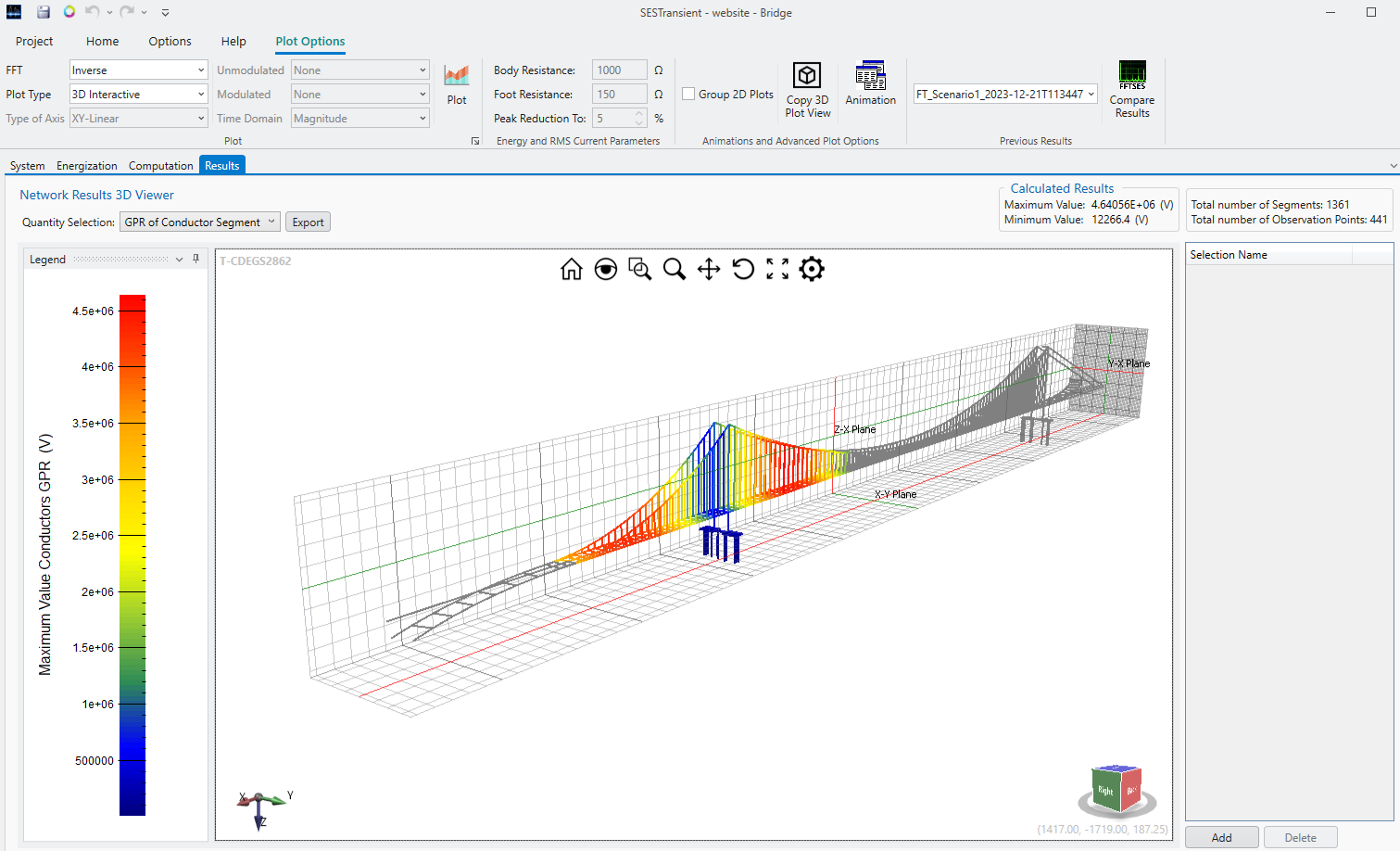
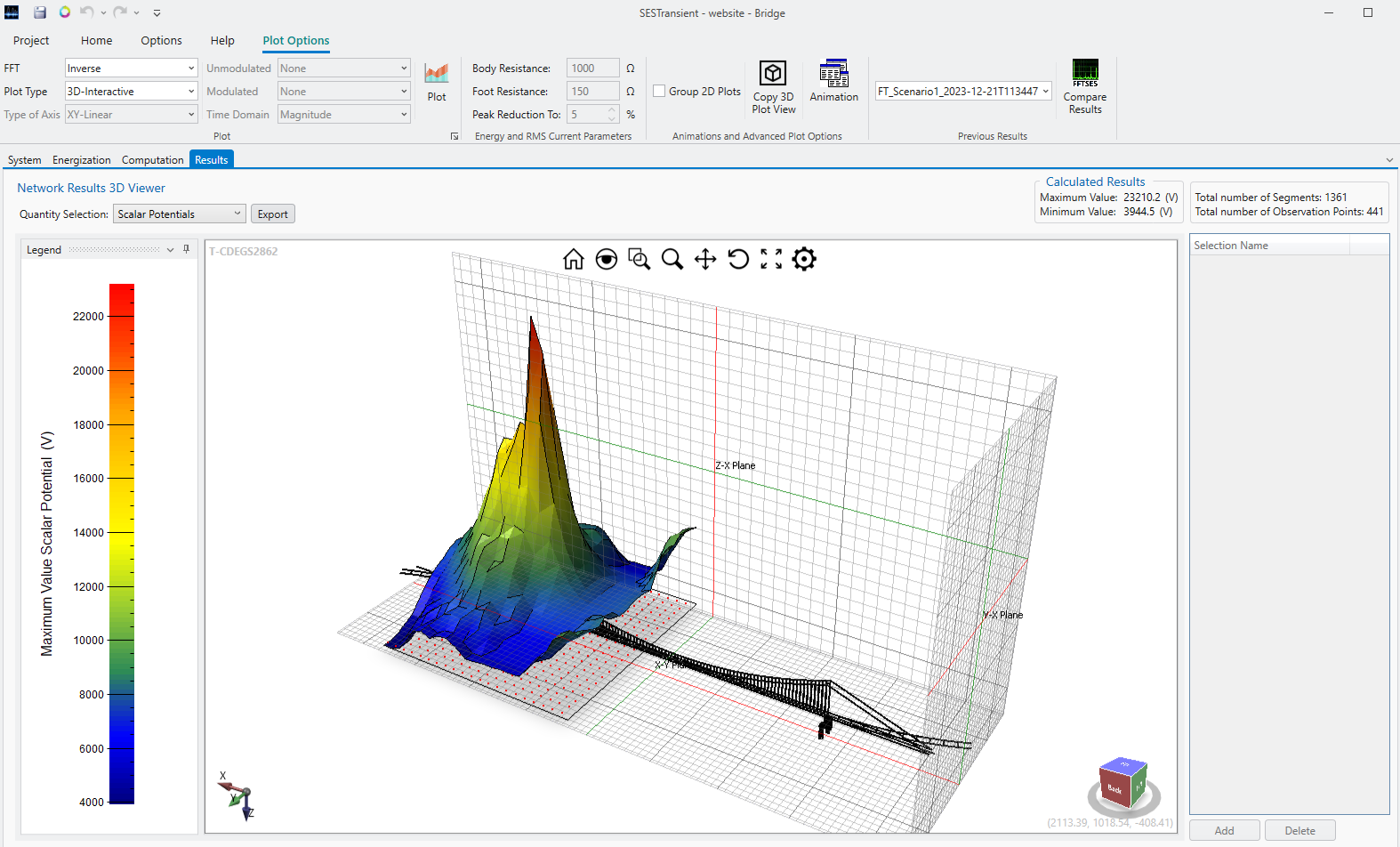
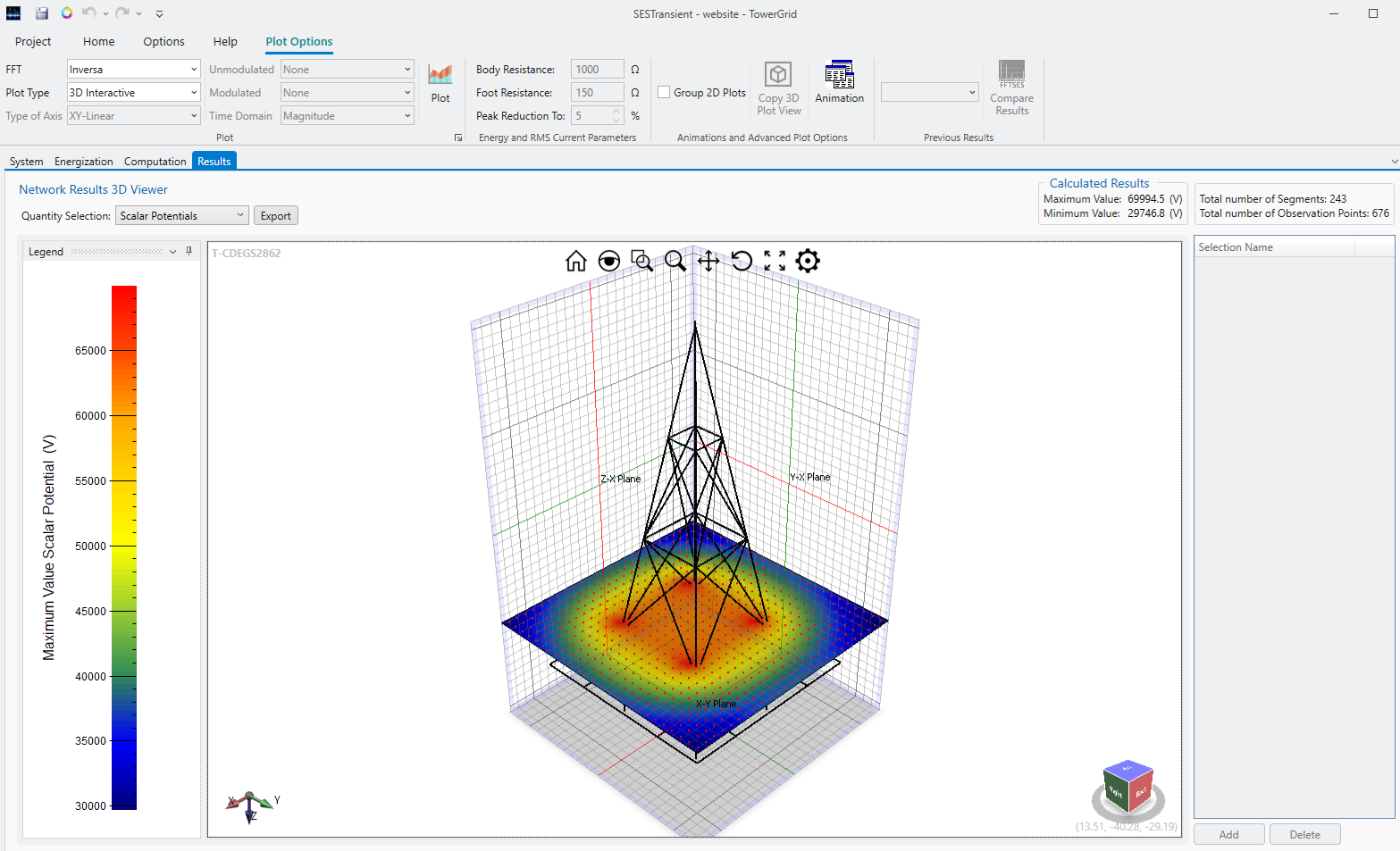
-
If an analysis must be interrupted to free up CPU resources for other tasks, it can be subsequently resumed without having to start from scratch.
-
2D and 3D time-domain animation plots can be created with FFT21Data.
[1] S. Visacro, Rafael Alipio, “Frequency Dependence of Soil Parameters. Effect on the Lightning Response of Grounding Electrodes”, IEEE Transactions on Electromagnetic Compatibility, vol. 55, 2013.







